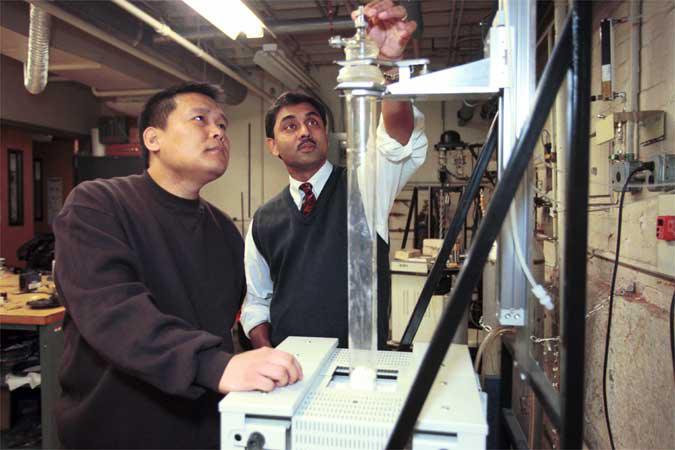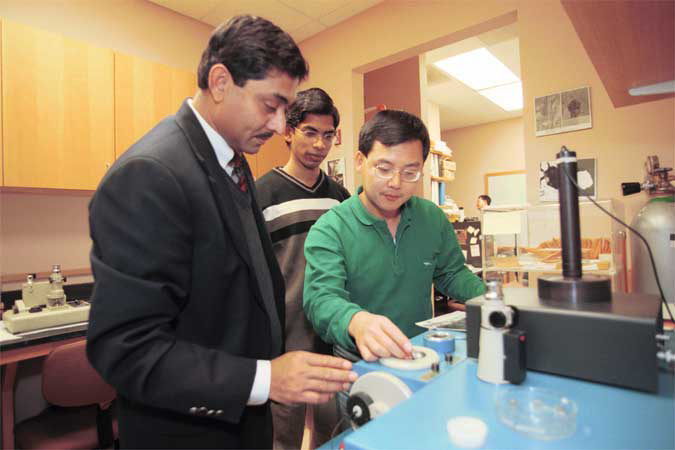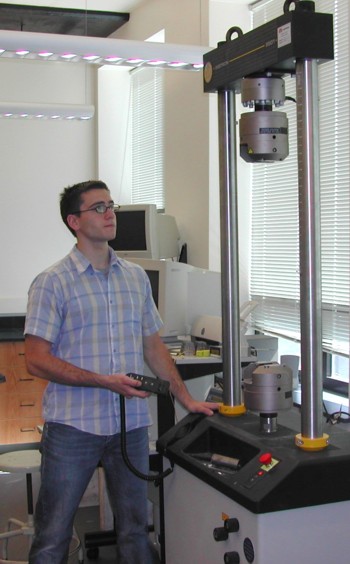|
|
Home
Who is Soumendra Basu?
Research Areas
Browse significant results in current research areas.
Lab Tour
View our laboratory facilities.
Classes
Courses taught by Professor Basu.
Cricket
A sophisticated distraction.
People
Meet Professor Basu's grad students.
Contact
Email, address and telephone.
|
|
|
|
|
| |
Professor Basu is the director of two research labs
and one undergraduate lab, that are described below.
 |
| Guosheng Ye and Professor Basu using
the cyclic oxidation apparatus. |
High Temperature Oxidation
Laboratory
The thrust of research in this laboratory
is to investigate the high temperature oxidation
behavior of materials by exposing metal and
ceramic samples to corrosive atmospheres containing
oxygen and sulfur at elevated temperatures up
to 1,600 C. The laboratory is equipped with
a CAHN thermogravimetric balance and a Mettler
microbalance for weight gain measurements, as
well as an apparatus for oxidation in O-18 atmospheres,
in order to determine oxidation mechanisms.
|
 |
| Professor Basu with Haiming Wu and
another graduate student use the ion mill
to make an electron-transparent TEM sample. |
Microscopy Laboratory
This laboratory is dedicated to the preparation
of electron transparent specimens for observation
in the Transmission Electron Microscope (TEM).
Specimens have to be reduced to thickness in
the order of 100Å in order to study atomic
arrangements by high resolution TEM. Equipment
available for this purpose includes a GATAN
dimpler and ion-mill, as well as precision grinding
and polishing apparatus. The laboratory is also
equipped with a darkroom, capable of processing
TEM negatives and prints.
|
 |
| Undergraduate student Ben Koplin uses
the INSTRON machine. |
Undergraduate Materials Laboratory
This lab is dedicated primarily to introducing
undergraduate students to metallographic and
testing techniques. This lab is equipped with
metallographic and materials testing equipment,
including an INSTRON machine, rockwell hardness
testers, annealing furnaces, microscopes, casting
equipment and welding stations.
|
| |
|
|
|
|

